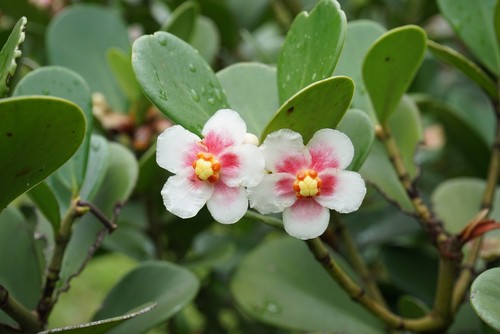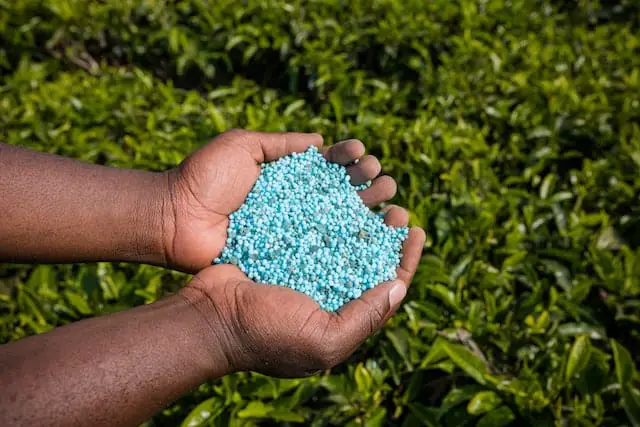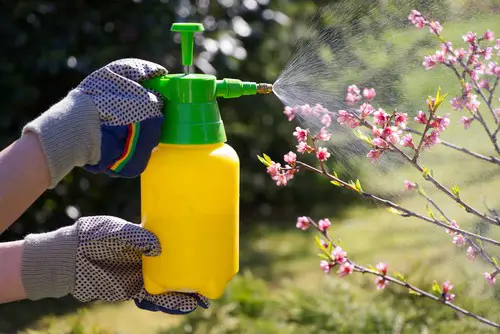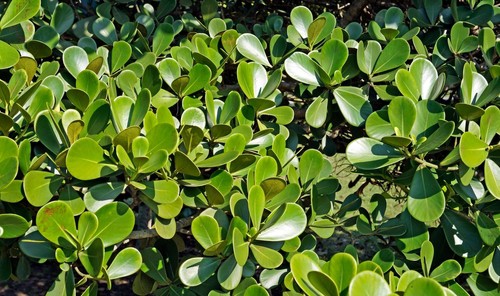Clusia plants are a popular choice for homeowners and landscapers alike, thanks to their lush green foliage and hardy nature. However, when brown spots begin to appear on the leaves, it can be a cause for concern. While some brown spots may be harmless, others can indicate a serious problem that requires immediate attention.
Identifying the cause of brown spots on Clusia leaves is the first step in determining the best course of action. Nutrient deficiencies, pests, and diseases are all common culprits.
In some cases, environmental factors such as over or under watering, excessive heat or cold, or exposure to direct sunlight can also cause brown spots to appear.
Key Takeaways
- Brown spots on Clusia leaves can be caused by a variety of factors, including nutrient deficiencies, pests, and diseases.
- Proper care and maintenance can help prevent brown spots from forming in the first place.
- Treatment options for brown spots on Clusia leaves vary depending on the underlying cause, but may include pruning, fertilization, or the use of pesticides or fungicides.
Related posts:
- Brown Spots on Cannabis Leaves
- Brown Spots on Cannabis Leaves During Flowering
- Brown Spots on Canna Leaves
Identifying Brown Spots on Clusia Leaves

If you notice brown spots on your Clusia plant’s leaves, it’s important to identify the cause of the problem quickly. Brown spots can be a sign of a variety of issues, including fungal infections, pests, or improper watering.
Spotting Early Signs
The earlier you can identify the cause of the brown spots, the better chance you have of saving your plant. Keep an eye out for the following early signs:
- Small, circular brown spots on the leaves
- Yellowing or browning of the leaf edges
- Wilting or drooping of the leaves
- Premature leaf drop
If you notice any of these signs, inspect the plant closely for further clues.
Differentiating Between Types of Spots
Different types of brown spots on Clusia leaves can indicate different problems. Here are a few common types of spots and their potential causes:
| Type of Spot | Potential Cause |
| Small brown or yellow spots | Underwatering |
| Large brown patches | Fungal infection |
| Brown spots with yellow halos | Bacterial infection |
| Brown spots with webbing | Spider mites |
If you’re unsure of the cause of the brown spots, take a sample of an infected leaf to a local nursery or extension office for identification.
Remember, identifying the cause of the brown spots is key to treating the problem effectively. With a little attention and care, your Clusia plant can make a full recovery.
Brown Spots on Clusia Leaves – 4 Common Problems
Clusia plants are known for their glossy, dark green leaves. However, when brown spots appear on the leaves, it can be a sign of an underlying issue. Here are some common causes of brown spots on Clusia leaves:
1. Watering and Overwatering Issues

Overwatering can cause brown spots on Clusia leaves. When the soil is too wet, the roots can’t absorb oxygen, leading to root rot. This can cause the leaves to turn yellow or brown and eventually fall off.
On the other hand, if the plant is not watered enough, the leaves can also turn brown and fall off. It is important to maintain a consistent watering schedule and to ensure that the soil is well-draining.
2. Sunlight and Temperature Factors
Clusia plants prefer bright, indirect sunlight. Direct sunlight can cause the leaves to burn and turn brown. Similarly, extreme temperatures, both hot and cold, can also cause brown spots on the leaves. It is important to keep the plant in a location with consistent temperatures and to protect it from direct sunlight.
3. Soil and Humidity Conditions
Clusia plants require well-draining soil and high humidity. If the soil is too compact or does not drain well, it can cause root rot and brown spots on the leaves.
4. Pest and Disease Infestations
Pests such as mealybugs and scale insects can cause brown spots on Clusia leaves. These insects feed on the plant’s leaves, causing damage and discoloration. Fungal infections can also cause brown spots on the leaves.
It is important to inspect the plant regularly for pests and to treat it with insecticidal soap or neem oil if necessary. If a fungal infection is suspected, it is important to remove affected leaves and treat the plant with a fungicide.
Care for Clusia with Brown Spots
If you notice brown spots on your Clusia leaves, it is important to take action to prevent further damage and promote healthy growth. Here are some tips for caring for your Clusia plant with brown spots.
1. Pruning and Fertilizing

Pruning and fertilizing are important steps in caring for a Clusia plant with brown spots. Prune any damaged or dead leaves to prevent the spread of disease. Fertilize the plant with a balanced fertilizer to promote healthy growth and prevent nutrient deficiencies. Be sure to follow the instructions on the fertilizer package for best results.
2. Addressing Root Rot and Air Circulation
Root rot can be a common problem for Clusia plants, especially if they are overwatered or planted in soil with poor drainage. To address root rot, remove the plant from the soil and trim any damaged roots. Repot the plant in fresh soil with good drainage.
Good air circulation is also important for preventing root rot and promoting healthy growth. Make sure your Clusia plant is not crowded and has plenty of space to breathe.
3. Choosing the Right Surface and Location
Choosing the right surface and location for your Clusia plant can also help prevent brown spots. Clusia plants prefer well-draining soil and bright, indirect light. Avoid placing your plant in direct sunlight or near a drafty window.
4. Preventing and Treating Diseases
Clusia plants can be susceptible to a variety of diseases, including leaf spot and powdery mildew. To prevent these diseases, avoid overwatering your plant and make sure it has good air circulation. If you notice signs of disease, such as brown spots on the leaves, treat the plant with a fungicide according to the instructions on the package.
Treatment Options
If your Clusia plant has brown spots on its leaves, there are a few treatment options available. Two common treatments include using fungicides and consulting an arborist.
Using Fungicides

Fungicides can help treat fungal infections that cause brown spots on Clusia plant leaves. Before applying fungicides, it is important to identify the type of fungus causing the infection.
This can be done by consulting with a plant expert or taking a sample of the infected plant to a local nursery. Once the type of fungus is identified, a specific fungicide can be chosen to treat the infection.
When using fungicides, it is important to follow the instructions on the label carefully. Some fungicides may need to be applied multiple times, while others may require a specific waiting period before the plant can be watered again. It is also important to wear protective clothing, such as gloves and a mask, when applying fungicides.
When to Consult an Arborist
If the brown spots on your Clusia plant’s leaves do not improve after using fungicides or if the plant’s overall health appears to be declining, it may be time to consult an arborist. An arborist is a tree specialist who can diagnose and treat a variety of tree and plant problems, including fungal infections.
An arborist can also provide guidance on proper watering and fertilization techniques, which can help prevent future infections. Additionally, if the brown spots on the Clusia plant’s leaves are caused by a pest infestation, an arborist can recommend the appropriate pest control measures.
Overall, treating brown spots on Clusia plant leaves requires careful attention to the plant’s environment and proper identification of the underlying cause of the infection. Using fungicides and consulting an arborist are two effective treatment options that can help restore the plant’s health and prevent future infections.
Clusia Species and Varieties
Clusia is a genus of flowering trees and shrubs that are native to tropical regions of the Americas. There are approximately 150 species in the Clusia genus, with Clusia rosea being the most commonly cultivated species.
1. Clusia Rosea
Clusia rosea, also known as the Autograph Tree or Pitch Apple, is a popular landscape plant due to its attractive foliage and ease of care. The leaves of Clusia rosea are thick and glossy, with a leathery texture.
The plant produces small, white flowers that are followed by a fruit that resembles a small apple. The fruit contains a hard pit that is not edible.
Clusia rosea is a slow-growing plant that can reach up to 30 feet in height and spread up to 25 feet. It prefers full sun to partial shade and well-draining soil. Clusia rosea is relatively drought-tolerant and only needs to be watered once a week.
2. Other Clusia Varieties
In addition to Clusia rosea, there are several other Clusia varieties that are popular among gardeners and plant enthusiasts. Some of these varieties include:
- Clusia guttifera: Also known as the Small-Leaf Clusia, this variety has smaller leaves than Clusia rosea and is often used as a hedge or border plant.
- Clusia major: This variety has larger leaves than Clusia rosea and is often used as a specimen plant.
- Clusia lanceolata: Also known as the Lance-Leaf Clusia, this variety has long, narrow leaves and is often used as a houseplant.
3. Understanding Clusia Growth Patterns
Clusia plants have a unique growth pattern that sets them apart from other plants. Clusia plants have the ability to grow aerial roots that can attach to surfaces such as rocks, trees, and buildings. These roots can be used to anchor the plant in place and absorb moisture and nutrients from the surrounding environment.
Clusia plants are also known for their ability to adapt to a wide range of growing conditions. They can tolerate drought, heat, and poor soil conditions, making them an ideal plant for novice gardeners or those with limited gardening experience.
Frequently Asked Questions
What causes brown spots on Clusia leaves?
Brown spots on Clusia leaves can be caused by a variety of factors. One common cause is overwatering, which can lead to root rot and other fungal infections.
Nutrient deficiencies can also cause brown spots on leaves. Additionally, pests such as spider mites and scale insects can cause brown spots on Clusia leaves.
How do you treat Clusia fungus?
To treat Clusia fungus, it is important to first identify the type of fungus affecting the plant. One common fungal disease that affects Clusia plants is leaf spot, which appears as small brown or yellow spots on the leaves.
To treat leaf spot, remove any infected leaves and dispose of them. It is also important to avoid overwatering and to ensure that the plant receives adequate sunlight and nutrients.
What are the spots on my Clusia rosea leaves?
The spots on Clusia rosea leaves may be caused by a variety of factors, including fungal infections, nutrient deficiencies, and pests. It is important to identify the specific cause of the spots in order to properly treat the plant.
Why are my Clusia rosea leaves turning brown?
Clusia rosea leaves may turn brown due to a variety of factors, including overwatering, nutrient deficiencies, and pests. It is important to identify the specific cause of the browning in order to properly treat the plant.
What are common diseases of Clusia plants?
Common diseases of Clusia plants include leaf spot, root rot, and fungal infections. These diseases can be caused by overwatering, poor drainage, and other environmental factors. It is important to properly identify the specific disease affecting the plant in order to properly treat it.
Why are Clusia leaves turning yellow and falling off?
Clusia leaves may turn yellow and fall off due to a variety of factors, including overwatering, nutrient deficiencies, and pests. It is important to identify the specific cause of the yellowing and falling off in order to properly treat the plant.

Hey, I’m Lisa and I’ve been an avid gardener for over 30 years. I love writing, talking and living in the garden! Feel free to connect with me on my socials below

